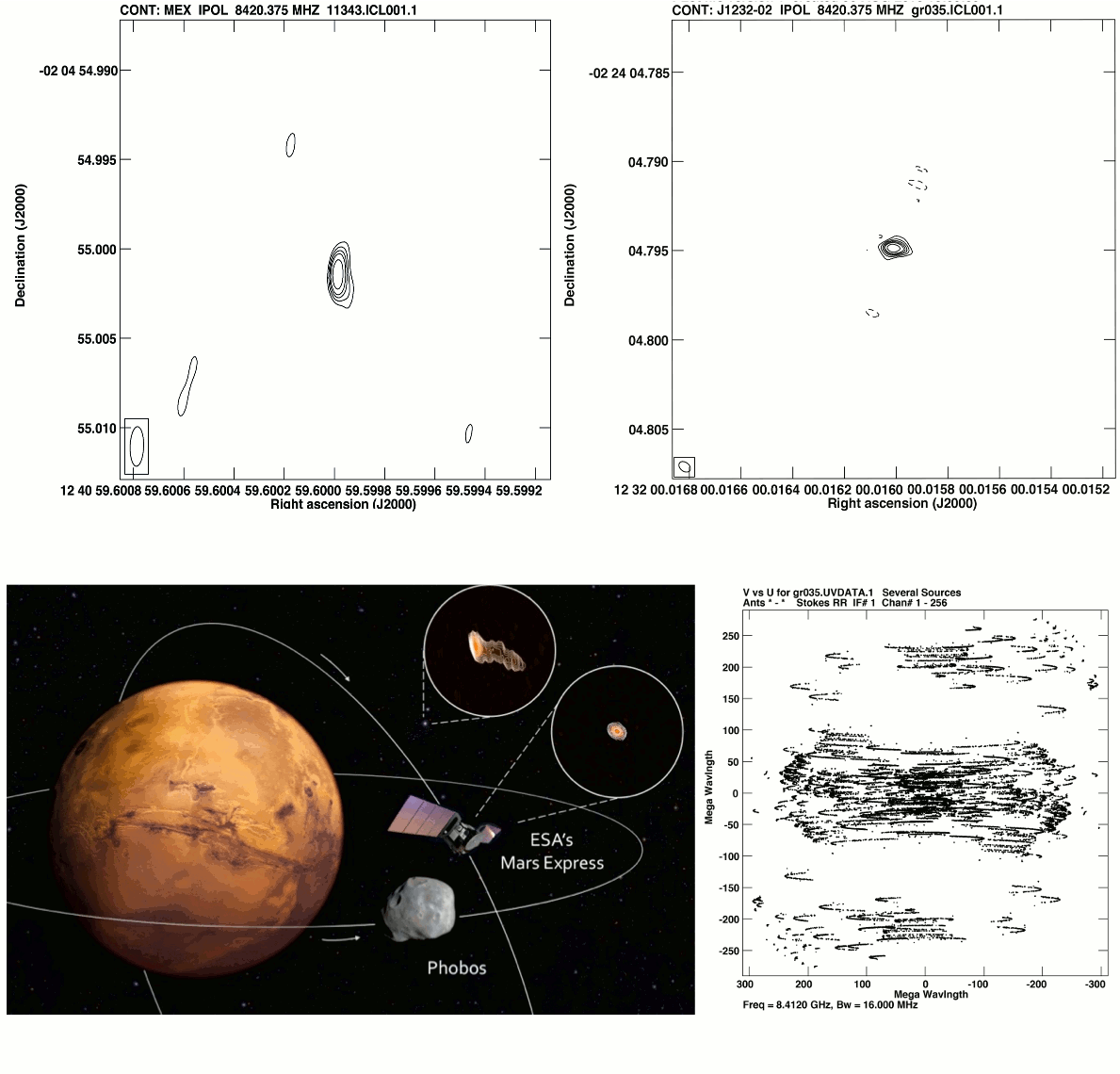Daily Image
18-09-2015VLBI observations of ESA's MEX flying-by Phobos
| Submitter: | Joseph Kania |
| Description: | PRIDE (Planetary Interferometry and Doppler Experiment), a project led by the Joint Institute for VLBI - ERIC (JIVE), aims for ultra-precise determination of spacecraft state vectors (i.e. position, velocity, etc). By state vectors determination, PRIDE has already produced results on the atmospheres of Titan, Venus, and Mars. My summer student project focused on PRIDE observations of ESA's Mars EXpress (MEX) spacecraft during a close (58 km) flyby of Phobos, one of the two small moons of the planet Mars. We used the bright radio source J1232-0224 (top right) as a phase reference, applying its calibration solutions to MEX. In this manner, we produced some 200 images of the spacecraft, a subset of which can been seen at the top left. We fitted Gaussians to these images to find the position of MEX as a function of time. The uv-coordinate plot (bottom right) shows the coverage achieved by the 30 radio telescopes all over Europe that were involved in the 26 hours of observations. All of the processing has been done in AIPS (Astronomical Image Processing System) controlled via ParselTongue, a python wrapper for AIPS created at JIVE. The project focused on the technical aspect of the experiment. Pascal Rosenblatt (PI of the observations) will include our data in his dynamical modelling of the Phobos flyby. Using this model, one can constrain the structure of Phobos' gravitational field. The latter will give information about the moon's interior. By determining the interior composition we hope to constrain the possible origin scenarios, and determine whether Phobos was formed in situ, or whether it is a captured asteroid. |
| Copyright: | JIVE and ESA (for Mars, Phobos and MEX images) |
| Tweet |  |
